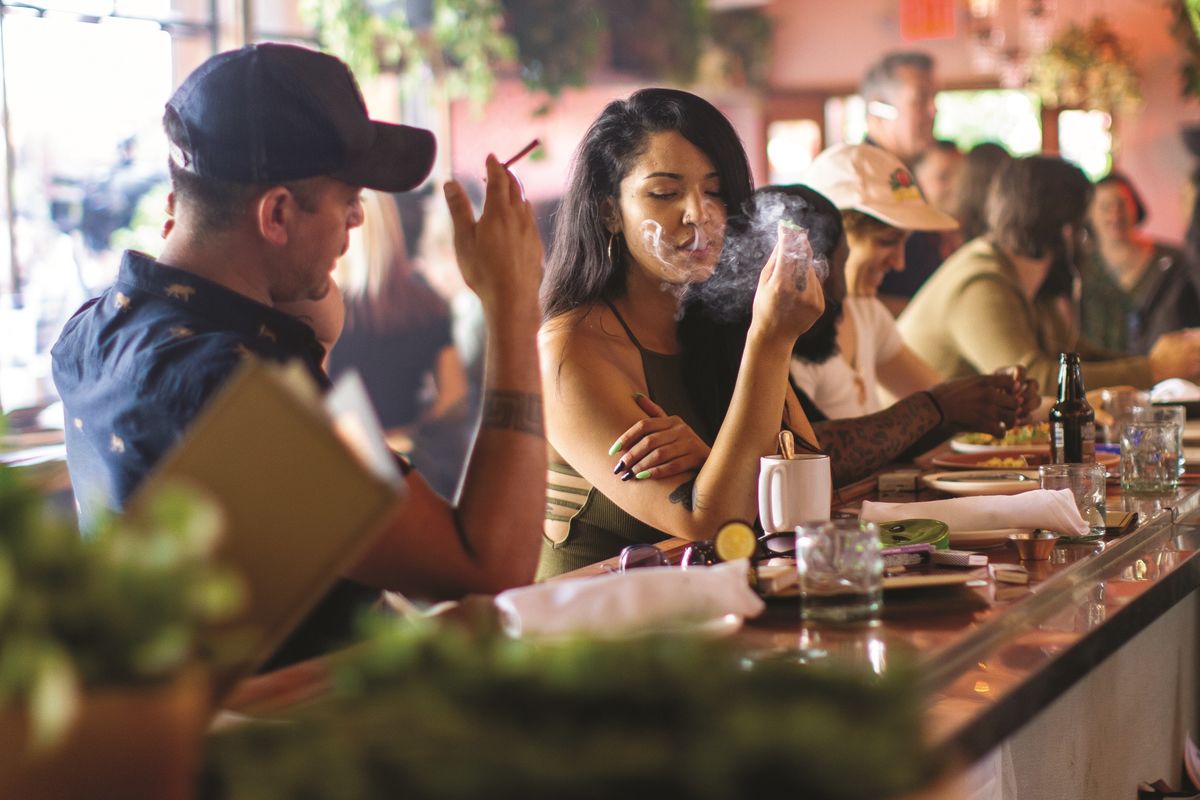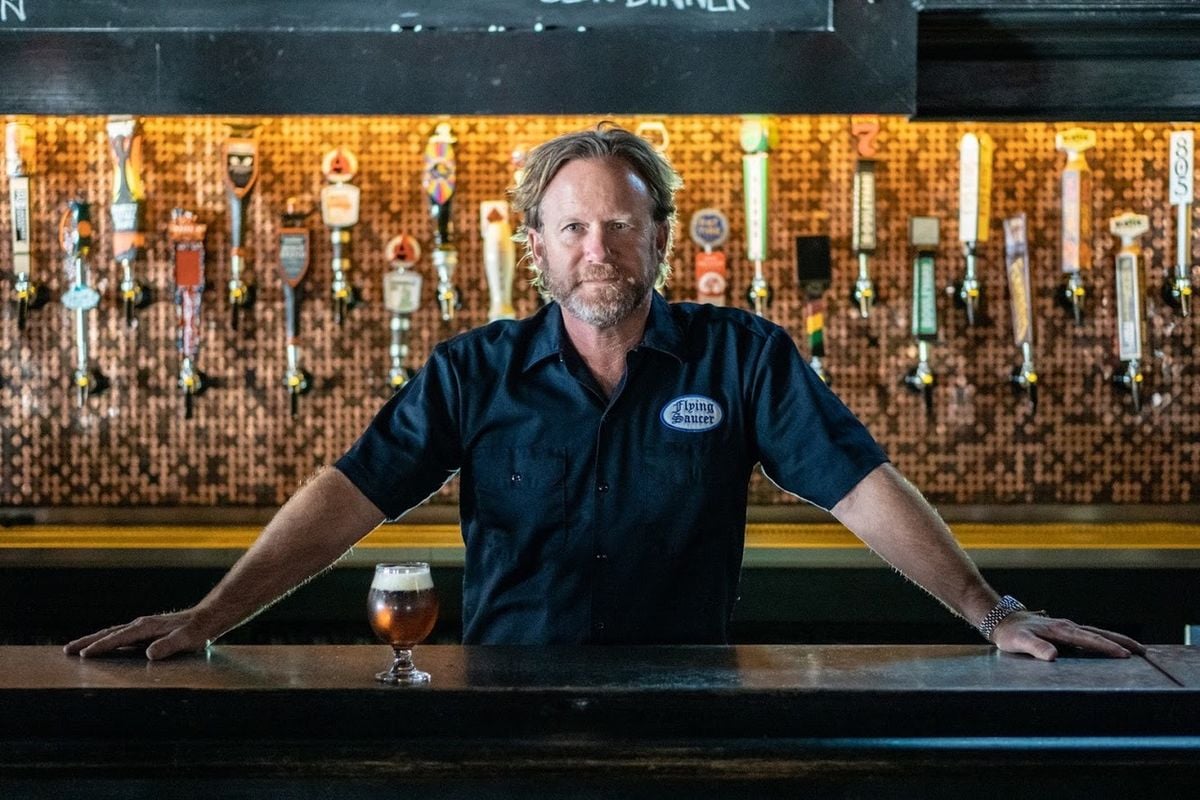Start 14-Day Trial Subscription
*No credit card required

2020 Restaurant Trends
Whether you like to lay a solid foundation for your drinking session or prefer to snack while you sip, a rendezvous with food is essential if you’re planning to drink. Unless you’re relaxing by the fireside after a home-cooked meal, chances are you’ll have few reservations about making reservations at a restaurant. After all, the good ones always serve beer.
Given that legislation and the stratification of the craft beer scene have made brewpubs a likely strategy to focus on for brewers, as opposed to shooting for national distribution, the number of operating brewpubs in the U.S. are steadily increasing, and so too is the need for mastery of more than just the liquid realm. With that in mind, here’s what’s been hot in the kitchen in 2019, and what we might expect looking ahead.
No One Knows Food Like the National Restaurant Association
The first set of data we’ll look at is, fittingly, the National Restaurant Association’s “What’s Hot” Culinary Forecast, which asked chefs to rank 140 items as either “hot,” “yesterday’s news” or a “perennial favorite.”
News flash for anyone who’s been living under a rock, or perhaps more suitably, a stone: the taboo of cannabis is a thing of the past. According to the report, nearly 77 percent of chefs ranked cannabis- or CBD-infused drinks as 2019’s top trend, while 76 percent of them ranked cannabis- and CBD-infused food as the second-most popular. The chefs noted that “infusing foods with [cannabis-related] ingredients could create unique cuisine opportunities and potential new markets for experiential dining occasions.
Considering that AB InBev, Molson Coors, Heineken and Constellation Brands have all begun exploring THC and CBD drink options, there is no doubt that the major players have gotten wiser about the future of bud.
Even Coca-Cola has announced it will look into CBD-infused “functional wellness beverages around the world,” which may have partially been spurred by a Pepsi announcement that it had no plans to do so, which resulted in a drop in the company’s stock prices.
If you’re wondering about the specifics of each venture, Constellation Brands (parent company to Modelo and Corona, among others) has invested $4 billion into Canopy Growth Corp., Canada’s largest cannabis producer, while Heineken has already launched Hi-Fi Hops via Lagunitas, a THC-infused beverage that tastes like beer, which is currently available in medical marijuana dispensaries.
Meanwhile, AB InBev is looking to cannabis-related products as their green savior, as their strongest brands continue to lose market share to all things craft. AB has partnered with Tilray, a Canadian cannabis company, and will invest $50 million into researching alcohol-free THC and CBD options. Molson Coors Beverage Co. literally changed its name in the face of declining beer sales, announcing it would pivot to focus more on non-alcoholic, cannabis-infused drinks. The first, Flow Glow CBD-infused spring water, is already available in Canada.
And that’s all just on the beverage side of things. It doesn’t take a huge stretch of the imagination to picture restaurants solely dedicated to cannabis-infused foods. While it may be a few more years before it becomes commonplace, the future is already here: The country’s first licensed cannabis restaurant opened in West Hollywood in October, thanks to an ordinance allowing business licenses for just this purpose.
As such, Original Cannabis Cafe became the first of what will soon be many more. All in all, 300 businesses applied for a license, and eight more were approved based on “factors from social equity and innovation to community and design.” While it’s still illegal to consume cannabis in public in all states where it’s legal, the ordinance makes an exception within the walls of the restaurant, allowing for consumption of both cannabis food and drink.
Obviously, there’s a cultural shift afoot as “boomers” age and “millennials” start swinging their legislative kettlebells. Big beer businesses can see it coming, and until other governmental decision- makers catch on to the cash cow of legalized marijuana, places like Original Cannabis Cafe will reap the rewards. Reservations are booked a solid 30 days in advance, and Le Cordon Bleu graduate executive chef Andrea Drummer put together a menu “designed with flavor profiles to complement [cannabis] strains offered in-house.” If that sounds incredibly similar to what you might find at a classy brewpub, you’re right. There are many similarities between the path of craft beer to its current level of social integration and cannabis, which is anywhere from a couple years to decades behind, depending on how progressive your legislators are.
So, brewers and restaurateurs, take note. There’s no obligation to incorporate anything cannabis-related into your business, and for many, it would make no sense to do so. But if younger demographics make up a significant portion of your business, it’s something to at least be aware of. Expect to hear much more about CBD and THC in the coming year.
Indeed, per Keith Schlabs, venerable co-founder of the Flying Saucer Draught Emporium, his restaurants have not yet implemented CBD beverages. “CBD and THC beverages are not a thing in the markets that we occupy yet,” Schlabs said. “I do know many people that use the CBD oil to ease pain, lessen anxiety or aid in sleep, but it is not something our restaurants and bars have been presented with currently.”

A Different Kind of Green
Let’s take a look at what else has sparked the interest of the restaurant scene. Apparently, it’s “zero-waste cooking,” which 70 percent of survey participants ranked as the third-hottest trend. This practice is defined as when you cook every part of an animal, including its eyeballs and testicles. While it seems counterintuitive to pay for what might be deemed “lesser” cuts or things better suited for the dogs, think of it this way: people are paying for a feeling – specifically, the feeling that they are doing their part to save the Earth.
Conservation is as hot as the planet’s poles, and regardless of whether you believe in climate change, there’s not much to laugh at in terms of altruistic desire to conserve resources, no matter how nominal or hypocritical it might seem. And while that’s all well and good, what you can take away from a business standpoint is that people are willing to pay for that feeling.
This is why “organic” labeling is important, and why paper straws can earn you more return customers. When people know a business entity cares for the environment, it is humanized in a way all the advertising money in the world could never achieve. Even if you’re a member of the other NRA, the one with guns, if you care about profits, it doesn’t take a prophet to see that eco-friendly moves resonate with the public. The same goes for brewers – find a home for your spent grain, and let people know you’ve switched to eco-friendly packaging like Heineken, which recently announced it would drop plastic packaging in favor of a more environmentally conscious alternative. As of this writing, its stocks have risen steadily since the announcement. Green equals green in terms of positive PR, but also can net you long-term savings in terms of water usage and other raw materials.
Thinking Global
The fourth and fifth entries on the “What’s Hot” list pinpointed “global” dishes, for breakfast and for kids, as the next hot-ticket items. Unless you own a restaurant, that’s probably as much as you care to know regarding those items, but here’s what you can take away as a brewer – people are interested in continuing to expand their horizons. While “hyper local” is still in vogue and will remain so (it’s next on the list), people are less afraid of what’s beyond their borders, and more interested in experiencing things from the comfort of their dining table.
Moreover, they want the same for their kids, meaning this is likely more symbolic of a generational shift in perspective than a mere passing fad. Unless the next generation of whippersnappers takes a hard, nationalistic turn, we’re looking at a future of shared culture. If you like exotic tastes, or just don’t hate other cultures, that’s a good thing. And if you’re a chef or brewer looking to capitalize on the next big thing, you may very well find it in a dish or drink from the other side of the world.

Down the List and Into 2020
As mentioned, “hyper local” ranks at number six on the list, and that shouldn’t be news at this point. It’s a driving ideological feature in the artisan/craft movement. So, we’ll skip to the next few, which are “new cuts of meat” and “veggie-centric” cuisine. Again, more evidence that people are willing to explore new horizons, or even sacrifice their addiction to the sensory ideal in favor of other ideals. New cuts of meat are likely inspired from other cultural traditions, which goes hand in hand with using every bit of the animal. In other words, this is an offshoot of conservation, while focusing on more vegetable-forward dishes points to a growing group of people who value their health over what might make for a more delicious meal. Tastes are being recalibrated in real time, and brewers should be able to make an easy connection – healthy beer will sell well. Dark, sweet beers are out in favor of lighter, more subtle brews. This is a shift in mentality that goes well beyond beer – but a simple stroll through the supermarket could have told you that.
Rounding out the list is “chef-driven fast casual concepts” at number nine, and “craft/artisan/locally produced spirits” at number ten. Regarding fast casual concepts – this could be interpreted as a representation of American cultural preferences – we’re busy, and our time is important, but so is quality. Chef-driven fast casual concepts make for a happy compromise. Historically, this sort of model is already well-attuned to the desire for craft beverages among its customer base, so the only other observation worth making is that these establishments would be more likely to find success with lighter styles that don’t put its patrons on the floor. If they’re there to get in and out, they don’t need anything heavy, because they’ve got other business to attend to. Worst-case scenario, they buy two beers instead of one.
In terms of drinking establishments, immediacy isn’t really a problem – it’s on tap, ready to go. What you might take away is that people would be more likely to show up for a quick business meeting, in which case it would also make sense to offer something of quality that is relatively light. Suffice it to say, it’s far more socially acceptable than it used to be to enjoy a beer during the middle of the day, so it makes sense to offer tasty, light options.
And that brings us to the tenth item on the list, craft spirits. For any brewer hoping to expand but struggling to find space on big retailer’s shelves, this is an ideal solution. It’s hyper local, it often allows for more economical overlap with your brewing operations, whether on the production or distribution end, and it’s easy to manage without over-expanding.
Canned cocktails have also seen a jump in popularity, along with cocktails on tap – more avenues of delivery for your artisan spirit, which restaurants also appreciate due to their simplicity.
Whether you run a brewery or restaurant, onsite barrel-aged drinks, fresh-made sodas or seltzers or fruit-infused waters offer low-risk ways to capitalize on drinking preferences that fall between the cracks, while also offering means of finetuning the vibe of your establishment.
According to Keith Schlabs, his establishments have seen an increase in craft cocktails and other beverage types while maintaining robust beer lists:
“Our gastropubs that focus on craft beer have seen a slight shift towards craft cocktails. Our liquor sales have surpassed beer sales for a few years now. However, our beer lists are better today than they’ve ever been. We must continue to focus on supporting the incredible breweries we hope to keep in the market. We can’t just jump the shark and chase trends. We believe a bar should be well stocked for everyone – with a slight advantage toward the beer drinker.”
For all those options and ones previously mentioned, consider what might work for your business, and what they say about the consumer. All signs point to the desire for more choice, and options that consider the health of the individual, and the planet, in mind. Like it or not, this is the wave of the future, and it’s generally positive. We’re becoming more aware and conscientious, and with the future in mind, the more your establishment can reflect those ideals, the more you will win customers for life.

"Our liquor sales have surpassed beer sales for a few years now. However, our beer lists are better today than they’ve ever been," said Keith Schlabs, co-founder of Flying Saucer Draught Emporium.



